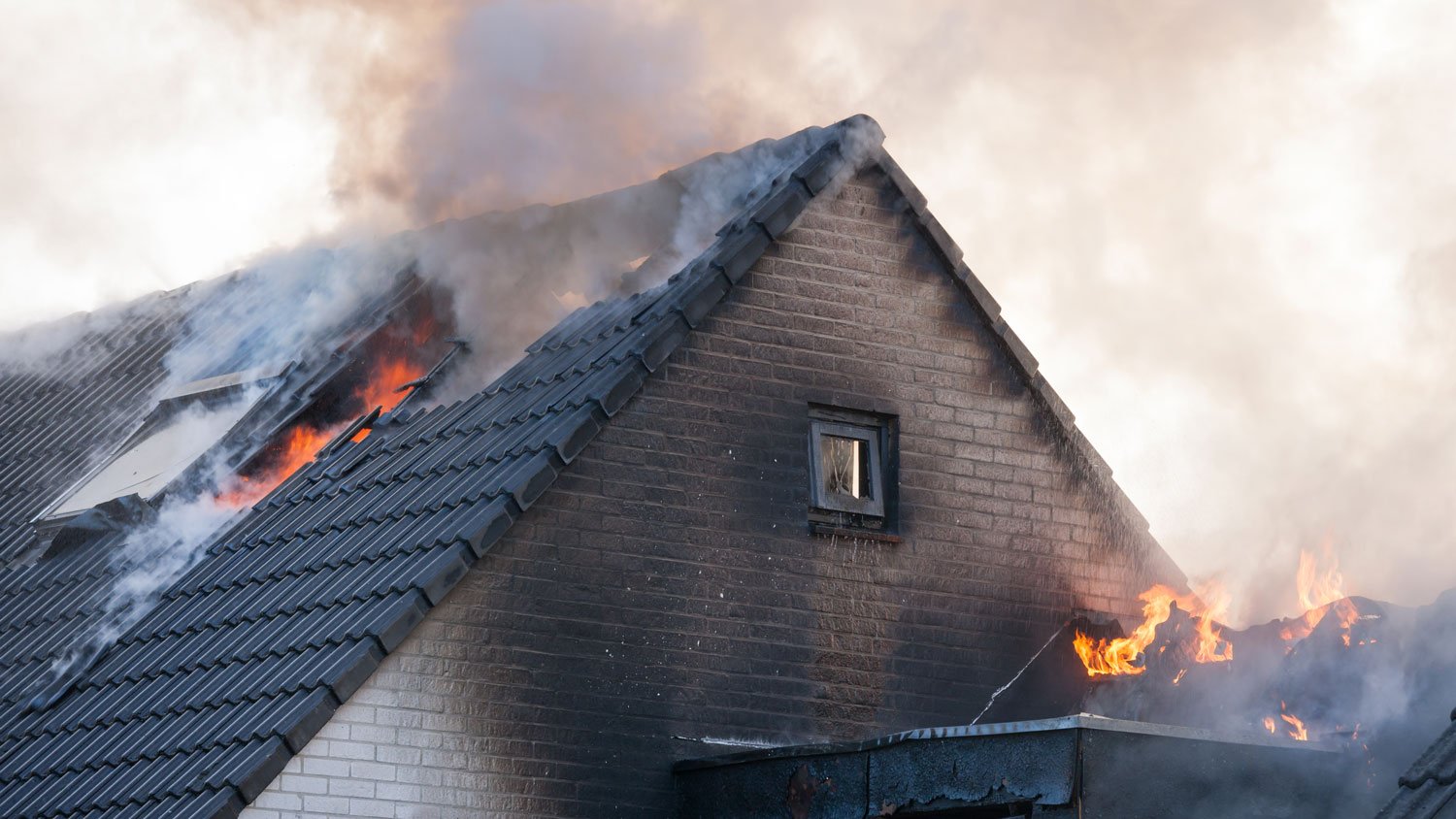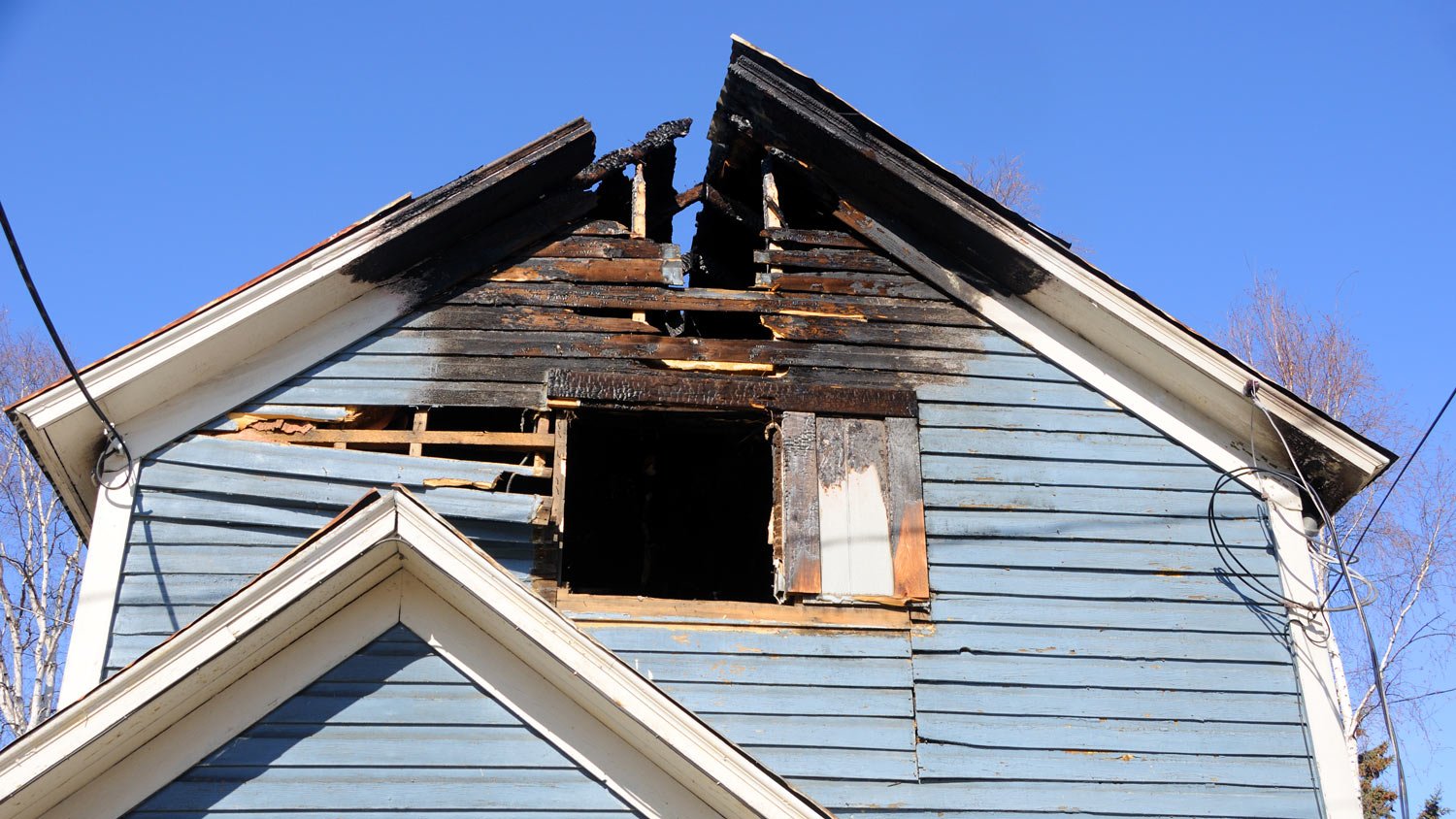Fire Damage vs. Smoke Damage: What’s the Difference
The difference between these kinds of damage is a hot topic


Fire damage can include burned structural materials and household items.
Smoke damage causes soot residue, discoloration, and acidic corrosion to items and materials.
Fire damage restoration is typically more time-consuming and extensive than smoke damage restoration.
After a house fire, you can be left with two different kinds of damage: smoke damage and fire damage. While these two types of damage are very closely related, they are actually two separate and distinct problems. Our guide explores the differences between fire damage and smoke damage so you have all the information you need to recover from a house fire.
Fire Damage vs. Smoke Damage: Key Differences

Fire damage and smoke damage go hand in hand, but they each have distinct characteristics. Fire damage results from the high heat of the flames as they burn, while smoke damage is caused by smoke and soot. They both pose safety risks—fire damage can threaten the structural integrity of your home and smoke damage puts your health at risk. The restoration process also varies, with fire damage generally needing more extensive structural work, while smoke damage requires deep cleaning surfaces and improving air quality.
| Type of Difference | Fire Damage | Smoke Damage |
|---|---|---|
| Cause | Flames, high heat | Smoke, soot |
| Type of damage | Burned or scorched materials | Residue, acidic corrosion |
| Safety | Structural damage | Health risks from particulates |
| Restoration | Replace structural materials | Deep clean and restore items and surfaces |
Differences in Causes
Technically, both kinds of damage are caused by fire, but smoke damage is a secondary result caused by the smoke that the fire produces. No matter what the cause of fire damage is, if there are flames, you’re likely to have smoke damage as well. Fire damage encompasses anything damaged or destroyed by high heat and flames, while smoke damage includes the damage caused by the fire’s byproducts—smoke and soot.
Type of Damage Differences

There are many different types of fire damage, but it includes:
Burned structural materials
Scorched or burned household items
Melted items or materials
Blistered, warped, or disintegrated items and materials
Some examples of smoke damage are:
Sticky or powdery residue on surfaces
Lingering odor and air particulates
Discoloration of materials and items
Safety Differences
Any house fire can pose serious safety risks, but fire damage and smoke damage differ in the specific risks they cause. Always have your home inspected by a trained professional to let you know when it’s safe to go back into your home after a fire.
Structural
Fire can cause immediate and serious structural damage as it burns. Fire can compromise the structural integrity of walls, floors, structural supports, and more. Restoring a home after a fire often includes replacing fire-damaged structural materials, which is why it’s so important to know the details of fire damage restoration if you’re selling or buying a fire-damaged house.
Smoke damage can also cause some structural damage over time, as the residue smoke leaves can cause acidic corrosion, which eats away at structural materials. Structural damage from smoke happens much more slowly than with fire, but it’s still a serious concern.
The first thing you should do to mitigate water damage is immediately stop the water source if you can. Remove all the standing water you can see with towels or pumps and dry the affected areas with fans and dehumidifiers. At this point, you'll likely need to call a professional water damage restoration company to fully restore your home.
Health Risks
A house fire can endanger your health in different ways. The high heat and flames from a fire obviously pose a serious burn risk, but it’s actually the smoke that can do the most damage, even from a small fire. As the fire burns, the smoke contains chemical compounds released from the burning materials. These compounds can cause skin damage, serious respiratory issues, and eye irritation. The particulates that smoke leaves behind are also health hazards—long-term exposure puts you at risk of chronic health conditions.
Even if your house fire was relatively minor, it’s still not safe to live in a house with smoke damage until a trained professional gives you the all-clear.
Restoration Differences
The restoration process will be different depending on whether you’re restoring fire damage or smoke damage. Of course, after a fire, you’ll need both, but you may need smoke damage restoration even after a small fire that didn’t result in fire damage. Whichever type of restoration you need, hire a fire damage restoration company to handle the restoration process.
Type of Restoration
Fire damage restoration involves more extensive repair or replacement of structural materials than smoke damage restoration. Local fire damage restoration pros can handle both the heavy-duty reconstruction as well as the more detailed work involved with restoring smoke damage.
Restoration Time Frame
How long fire damage restoration takes depends on the extent of the damage. Smoke damage restoration is a faster process than fire damage restoration, as fire damage restoration will also include handling smoke damage as well. The fire damage restoration process can take anywhere from two weeks to a year, while smoke damage restoration may take less than a week.
Restoration Costs
Because of the extensive structural work involved, fire damage restoration costs more than smoke remediation costs. More materials will need to be replaced due to fire damage, whereas smoke damage can often be repaired and deep cleaned instead.
Frequently Asked Questions
Even if they look fine, carpets should be replaced after smoke damage since they can absorb smoke, soot, and water all the way into the carpet padding. Fully removing smoke, fire, and water damage from carpeting can be a complicated and time-consuming process, so replacing the carpet is a safer bet.
Most insurance policies cover fire damage. Be sure to check the details of your policy to see how coverage is calculated—it can be either the full replacement cost of damaged materials and items or the actual cash value, which includes depreciation. When making a fire damage claim, be sure to get all the necessary documentation together to help expedite the process.









.jpg?impolicy=leadImage)






